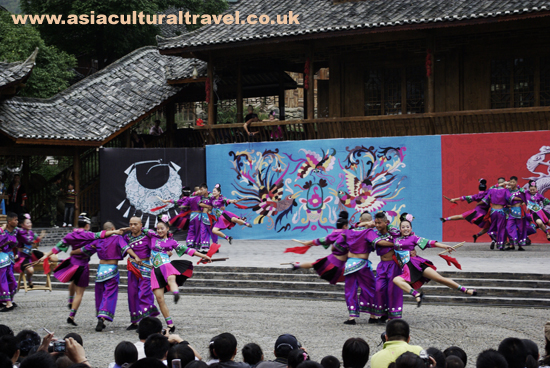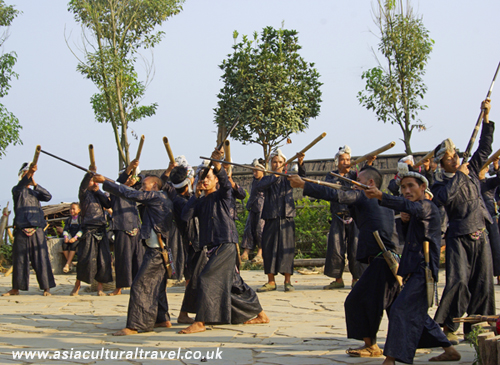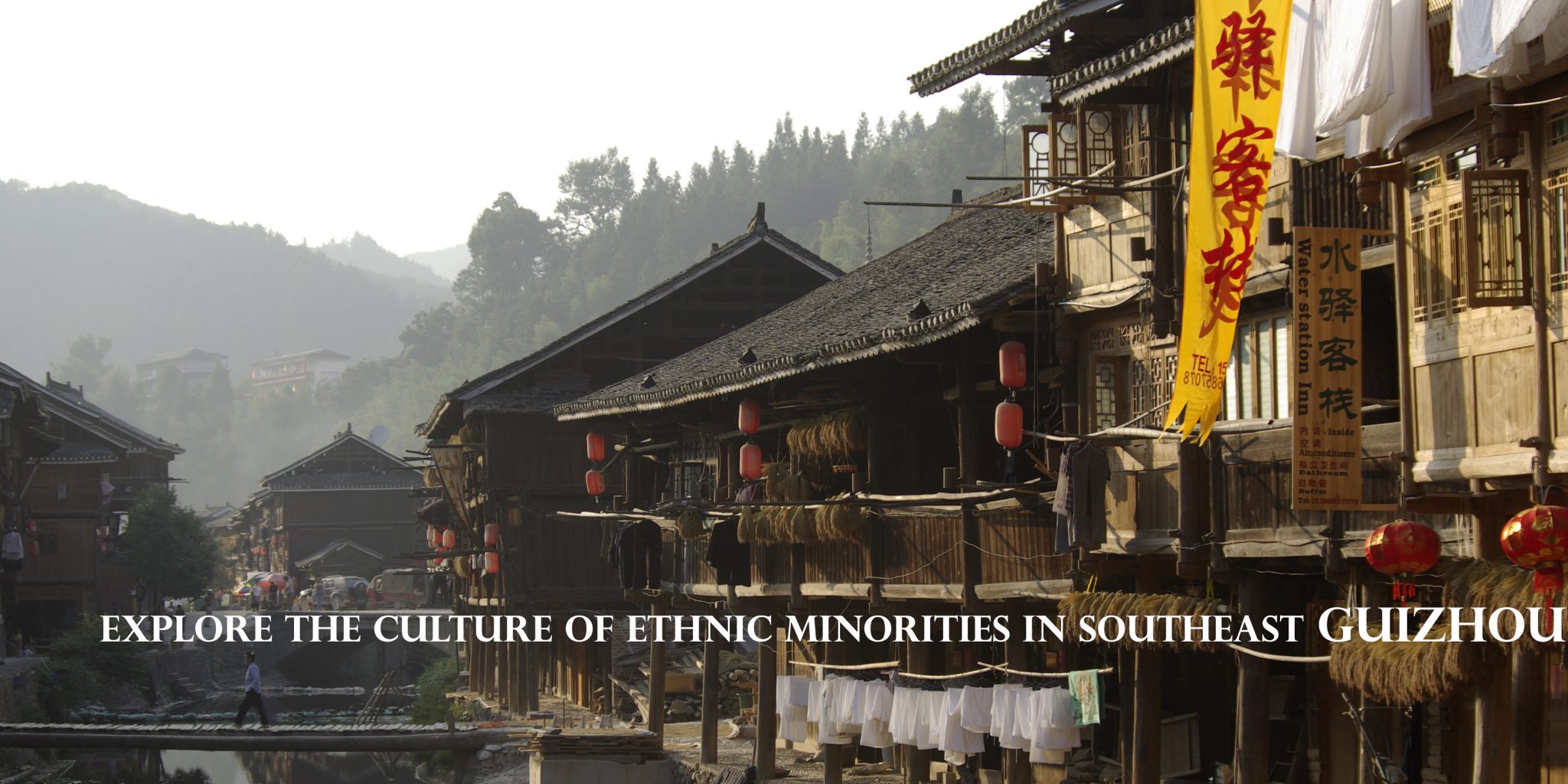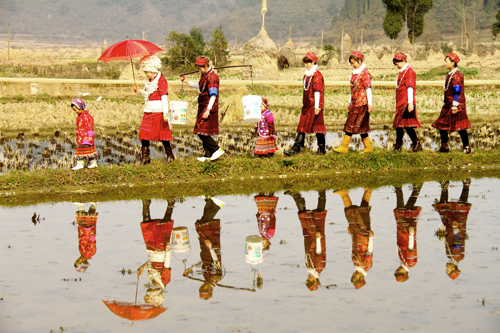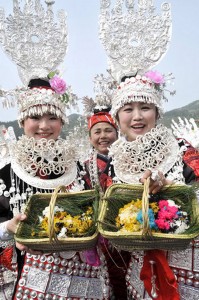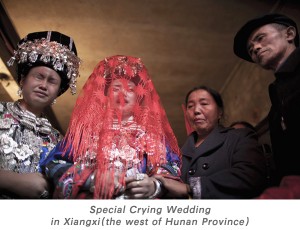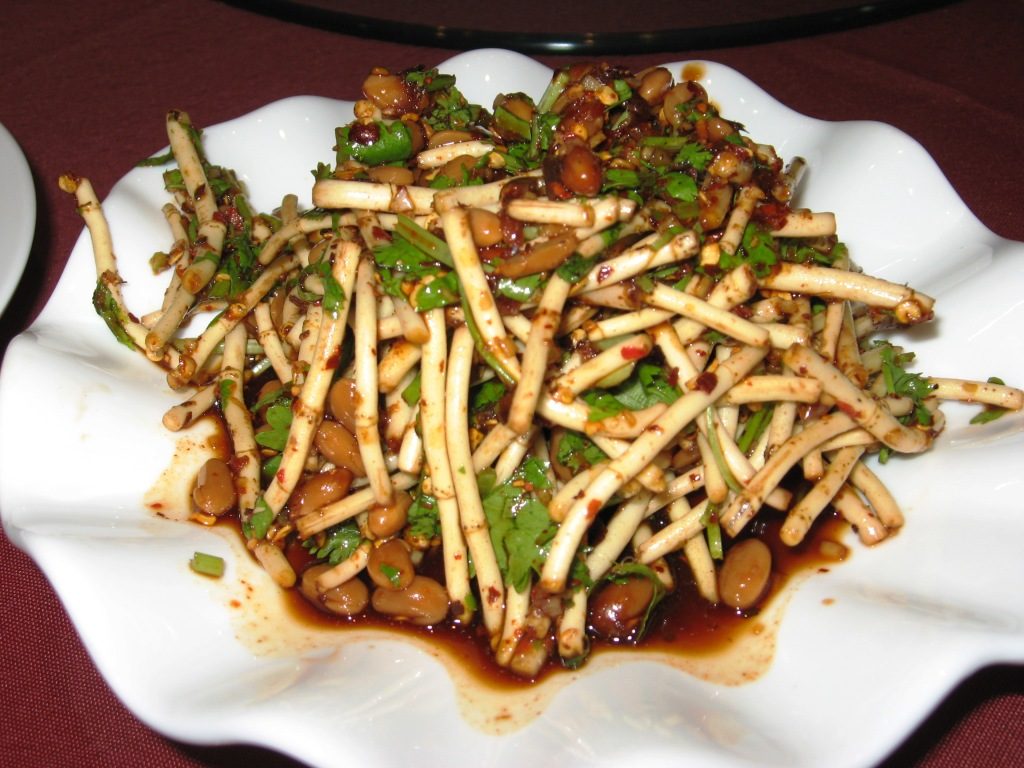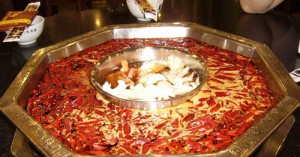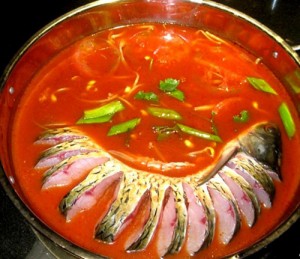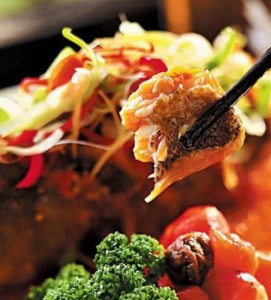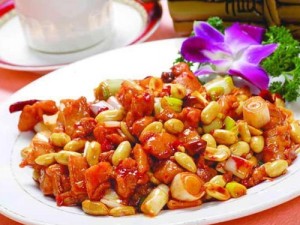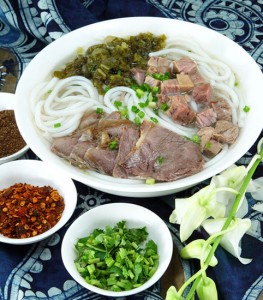Different Miao communities celebrate different festivals and, in some cases, celebrate the same festival but at different times. However, the Miao New Year, the Sister’s Meal Festival and the Lusheng Festival are considered the most culturally significant and are celebrated by almost all Miao communities.
Miao New Year
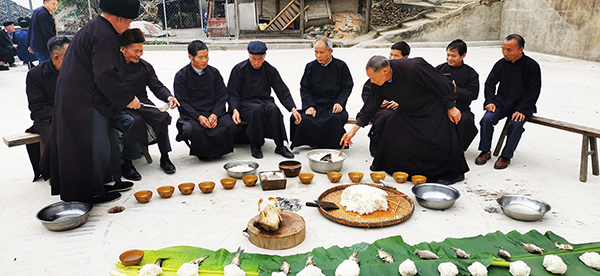 The Miao people celebrate a different New Year’s Day to that traditionally adhered to in China. It falls sometime during September to October according to the their lunar calendar. However, there is no exact date for the New Year’s Day each year and the official date is only announced two months prior to the festivities. In southeast Guizhou, the Miao community celebrate their New Year Festival on the “Rabbit Day” or the “Ox Day” of the lunar calendar according to ancient Miao tradition. During the New Year festival, women will wear traditional clothes and there will be large parades. The locals will celebrate by beating drums, dancing to the music of the lusheng, horse racing and sometimes horse fighting or bull-fighting.
The Miao people celebrate a different New Year’s Day to that traditionally adhered to in China. It falls sometime during September to October according to the their lunar calendar. However, there is no exact date for the New Year’s Day each year and the official date is only announced two months prior to the festivities. In southeast Guizhou, the Miao community celebrate their New Year Festival on the “Rabbit Day” or the “Ox Day” of the lunar calendar according to ancient Miao tradition. During the New Year festival, women will wear traditional clothes and there will be large parades. The locals will celebrate by beating drums, dancing to the music of the lusheng, horse racing and sometimes horse fighting or bull-fighting.
The Sister’s Meal Festival
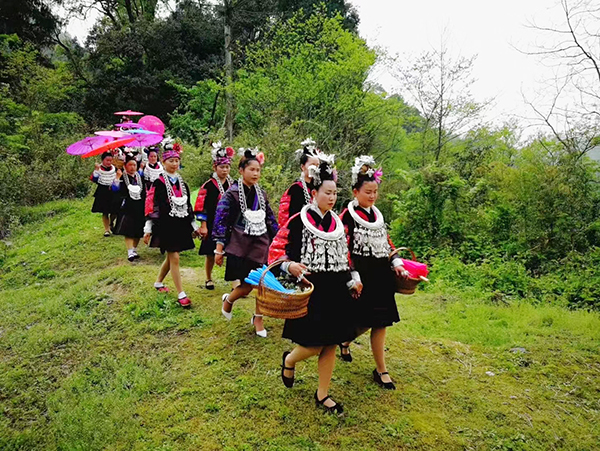 The Sister’s Meal Festival is considered to be the oldest version of what we know as Valentine’s Day. It is a favourite festival among the Miao communities in the Guizhou counties of Taijiang and Jianhe. It is celebrated from the 16th to the 18th of March according to the Chinese lunar calendar. Before the festival, Miao girls will go to the mountains to gather wild flowers and leaves, which are used to make coloured dye. This dye is used to make glutinous rice known as “sister’s rice”. When the festival begins, the Miao girls will adorn themselves in their finest silver jewellery and meet by the banks of a river to make “sister’s rice”. They dye the rice blue, pink, yellow and white to represent spring, summer, autumn and winter respectively.
The Sister’s Meal Festival is considered to be the oldest version of what we know as Valentine’s Day. It is a favourite festival among the Miao communities in the Guizhou counties of Taijiang and Jianhe. It is celebrated from the 16th to the 18th of March according to the Chinese lunar calendar. Before the festival, Miao girls will go to the mountains to gather wild flowers and leaves, which are used to make coloured dye. This dye is used to make glutinous rice known as “sister’s rice”. When the festival begins, the Miao girls will adorn themselves in their finest silver jewellery and meet by the banks of a river to make “sister’s rice”. They dye the rice blue, pink, yellow and white to represent spring, summer, autumn and winter respectively.
Finally the men will arrive. They will each single out the woman they love and sing to them. The woman responds to these songs by giving the man a cup of rice wine and the sister’s rice, which is wrapped in a handkerchief covered in symbols. If the rice is offered with a pair of red chopsticks, it means the woman returns the man’s affection. If only one chopstick is offered, it is a polite refusal. If a piece of garlic or a red chilli is placed on the rice, this indicates a flat refusal. Pine needles scattered on the rice means the man should present silks and colourful cloths to the girl and she will wait for him to woo her. This festival is particularly important in terms of courtship, as it is one of the few occasions when men and women from other Miao villages are able to mingle freely.
The Lusheng Festival
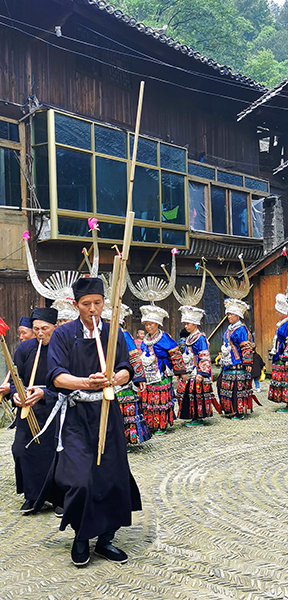 The Lusheng Festival is considered the most significant of all the Miao festivals and is celebrated widely throughout Guizhou, Yunnan and Sichuan. It is celebrated from the 16th to the 20th day of January according to the Chinese lunar calendar. During the Lusheng Festival, Miao people from surrounding villages will all come together in traditional dress and the men will all bring their lusheng. The men will play the lusheng whilst the women dance. They believe that this ceremony will bring a good harvest and good health to the people in the coming year. However, the festival is not simply about playing the lusheng and also features other activities typical of the Miao, such as singing, bullfighting, and horse racing.
The Lusheng Festival is considered the most significant of all the Miao festivals and is celebrated widely throughout Guizhou, Yunnan and Sichuan. It is celebrated from the 16th to the 20th day of January according to the Chinese lunar calendar. During the Lusheng Festival, Miao people from surrounding villages will all come together in traditional dress and the men will all bring their lusheng. The men will play the lusheng whilst the women dance. They believe that this ceremony will bring a good harvest and good health to the people in the coming year. However, the festival is not simply about playing the lusheng and also features other activities typical of the Miao, such as singing, bullfighting, and horse racing.
Although you can catch the Lusheng Festival in many Miao villages, the grandest one is considered to be the one held near Kaili in Guizhou. If you visit Guizhou in March, we recommend you visit Zhouxi Town, which is about 16 kilometres from Kaili city, where they hold a magnificent Lusheng Festival. If you miss it then there’s no need to worry! In Huangping County, about 75 kilometres outside of Kaili City, there’s another Lusheng Festival in November.
The Eat New / Harvest Festival:
The Miao ethnic minority celebrate a wide variety of different harvest festivals based on their location and sub-group. By far the most common is known as the Eat New Festival, where communities gather to dance, sing, and pray for a bountiful harvest in the coming year. One of the main activities of this festival is to dance in large circles to the sound of raucous folk music, with a particular emphasis on a folk wind instrument known as a lusheng. In fact, the lusheng is so beloved by the Miao people that they even have an entire festival dedicated to it!
Other Festivals
In Yunnan, the Miao people also celebrate a festival called “Stepping over Flower Mountains”. Childless couples often repeat their vows to the fertility god at this time of year. As part of a religious gesture, they will offer wine to the young people in their village. The young people will then dance under a pine tree which has a bottle of wine hanging from it. It is said that many young men and women fall in love during the festivities and childless couples hope that this will help bring them children.
Other commonly celebrated Miao festivals include the Dragon Boat Festival (national holiday), the Flower Mountain Festival (May 5th), the Tasting New Rice Festival (between June and July), the Pure Brightness Festival, and the Beginning of Autumn Festival.
Join a travel with us to discover the Culture of Miao Ethnic Minority: Explore the culture of Ethnic minorities in Southeast Guizhou
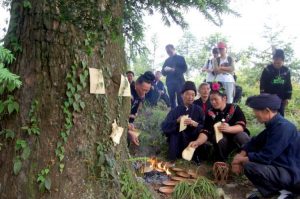
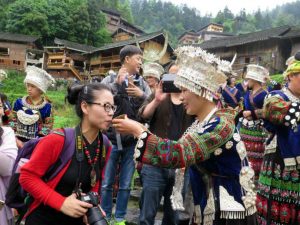
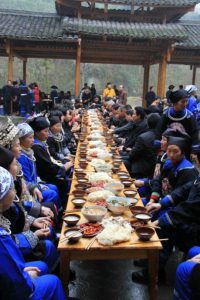
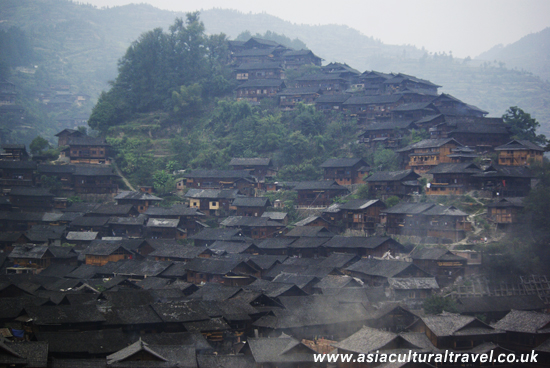
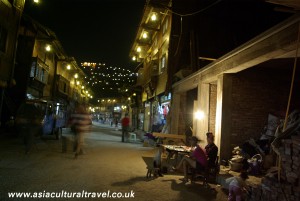
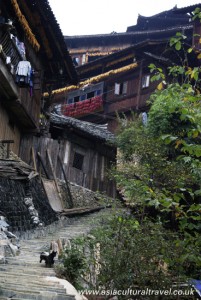
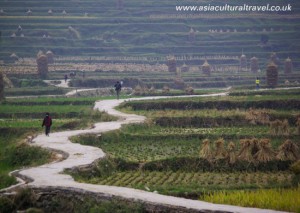
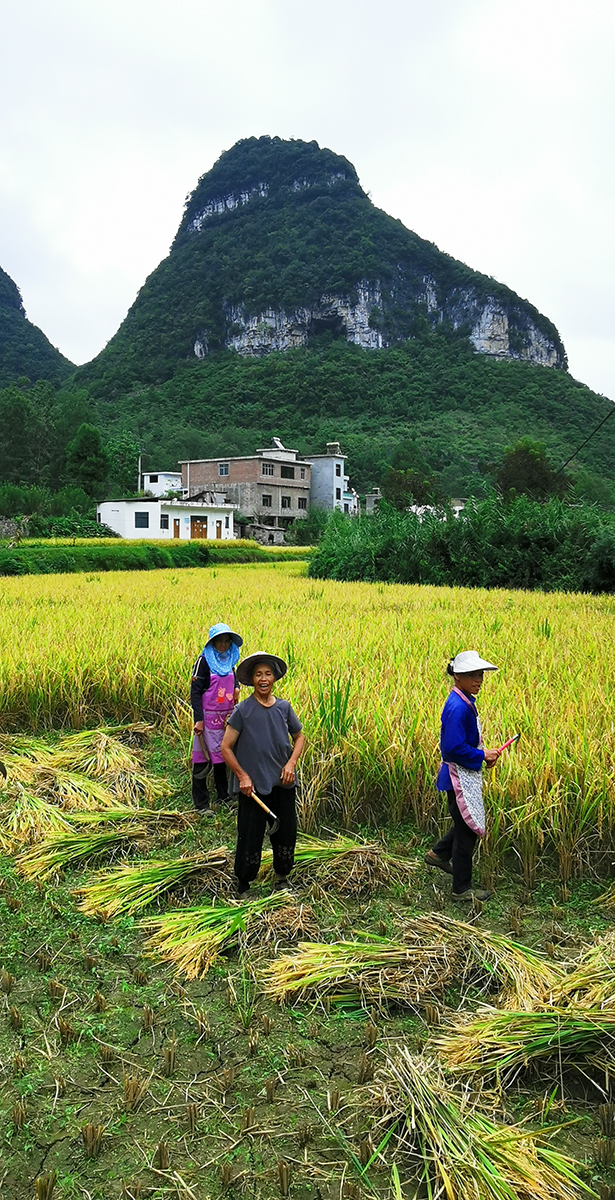 The cultivation of rice and maize are the chief means of subsistence for the Miao people. Rice, maize, millet and sweet potatoes are their staple foods, although in more northern areas they eat maize, buckwheat, potatoes and oats. Miao food typically employs sour and peppery flavours to enhance their dishes. Although the Miao diet is relatively simple, Miao dishes such as Fish in Sour Soup and snacks such as La Rou (a kind of cured, smoked bacon) are popular throughout Guizhou for their rich, flavoursome taste.
The cultivation of rice and maize are the chief means of subsistence for the Miao people. Rice, maize, millet and sweet potatoes are their staple foods, although in more northern areas they eat maize, buckwheat, potatoes and oats. Miao food typically employs sour and peppery flavours to enhance their dishes. Although the Miao diet is relatively simple, Miao dishes such as Fish in Sour Soup and snacks such as La Rou (a kind of cured, smoked bacon) are popular throughout Guizhou for their rich, flavoursome taste.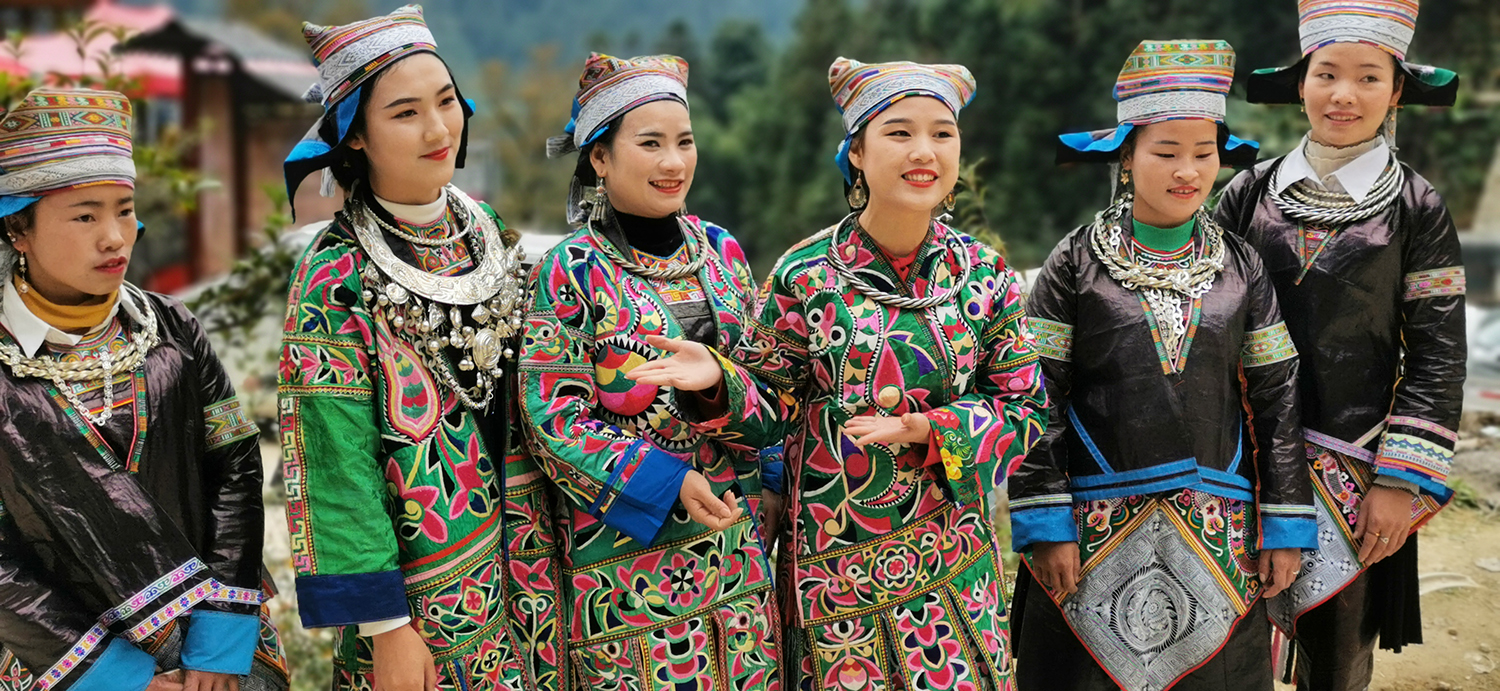
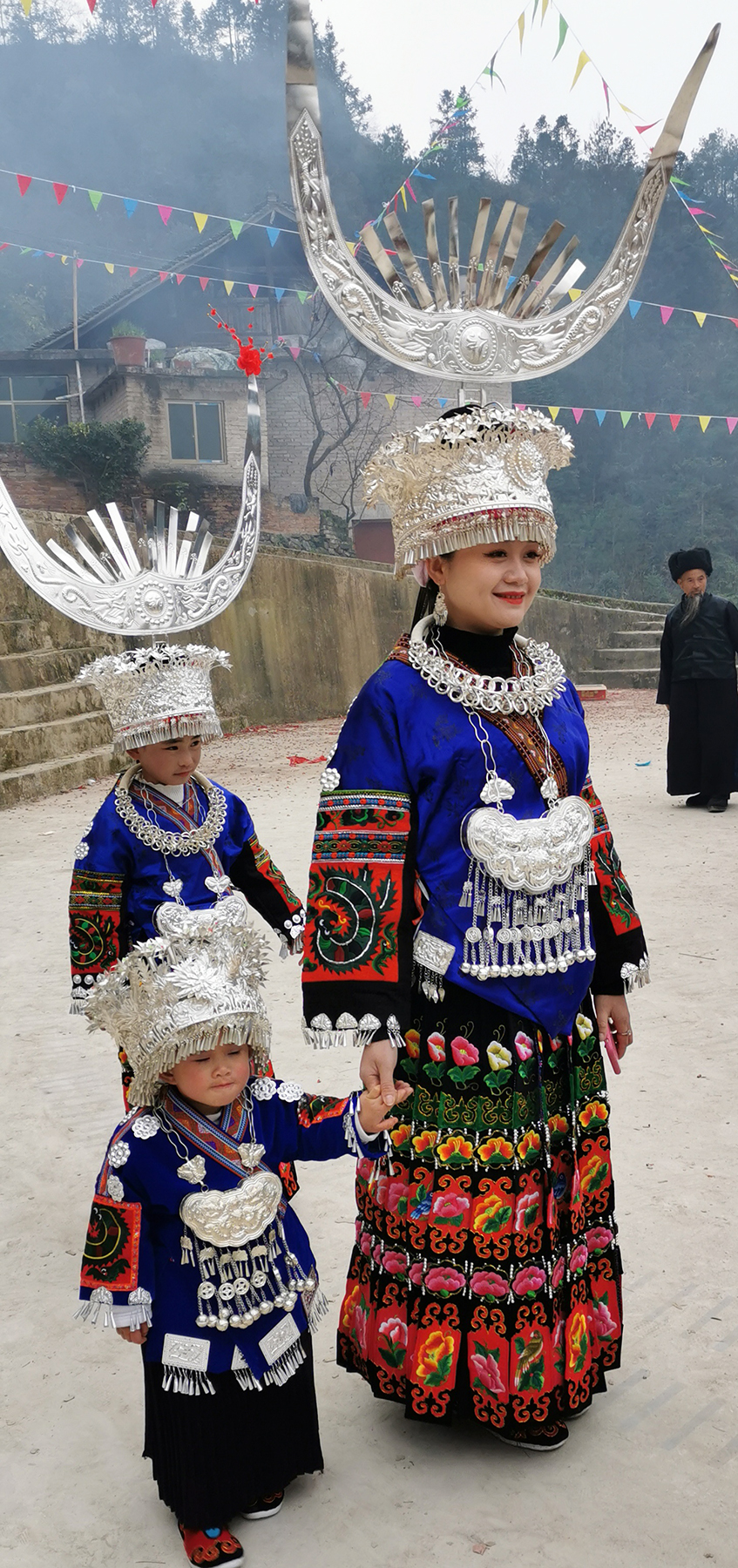 The daily clothing worn by Miao people will differ from place to place and many of the Miao subgroups are designated by the colour of their clothes, such as the Hmub Miao of southeast Guizhou who are often referred to as the Black Miao because of their characteristically indigo coloured clothing. In northwest Guizhou and northeast Yunnan, the Miao men will typically wear linen jackets that are colourfully embroidered and woollen blankets draped over their shoulders that are decorated in geometric patterns. In other areas, the men will wear short jackets that are buttoned down the front or to the left, long trousers with wide belts and long black scarves. In west Hunan and northeast Guizhou, the women wear jackets buttoned on the right and trousers that have delicately embroidered collars, sleeves and trouser legs. In other areas, the women wear high-collared short jackets and pleated skirts of varying length. These pleated skirts can have hundreds or even thousands of vertical pleats.
The daily clothing worn by Miao people will differ from place to place and many of the Miao subgroups are designated by the colour of their clothes, such as the Hmub Miao of southeast Guizhou who are often referred to as the Black Miao because of their characteristically indigo coloured clothing. In northwest Guizhou and northeast Yunnan, the Miao men will typically wear linen jackets that are colourfully embroidered and woollen blankets draped over their shoulders that are decorated in geometric patterns. In other areas, the men will wear short jackets that are buttoned down the front or to the left, long trousers with wide belts and long black scarves. In west Hunan and northeast Guizhou, the women wear jackets buttoned on the right and trousers that have delicately embroidered collars, sleeves and trouser legs. In other areas, the women wear high-collared short jackets and pleated skirts of varying length. These pleated skirts can have hundreds or even thousands of vertical pleats.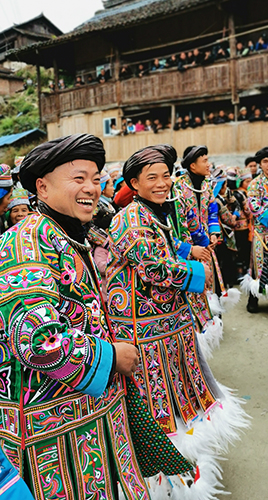 On top of their beautifully embroidered clothes, Miao women are also famed for the glittering silver adornments that they wear during festival time. The Miao people regard silver as a symbol of wealth and so have a particular fondness for it. They also believe silver symbolises light and good health, so wearing silver will ward off evil spirits, stave off natural disasters and bring good fortune. When it comes to the ornamental silver worn by the Miao women, the heavier the better, so some festival outfits can weigh upwards of 20 to 30 jin (about 10 to 15 kg).
On top of their beautifully embroidered clothes, Miao women are also famed for the glittering silver adornments that they wear during festival time. The Miao people regard silver as a symbol of wealth and so have a particular fondness for it. They also believe silver symbolises light and good health, so wearing silver will ward off evil spirits, stave off natural disasters and bring good fortune. When it comes to the ornamental silver worn by the Miao women, the heavier the better, so some festival outfits can weigh upwards of 20 to 30 jin (about 10 to 15 kg).